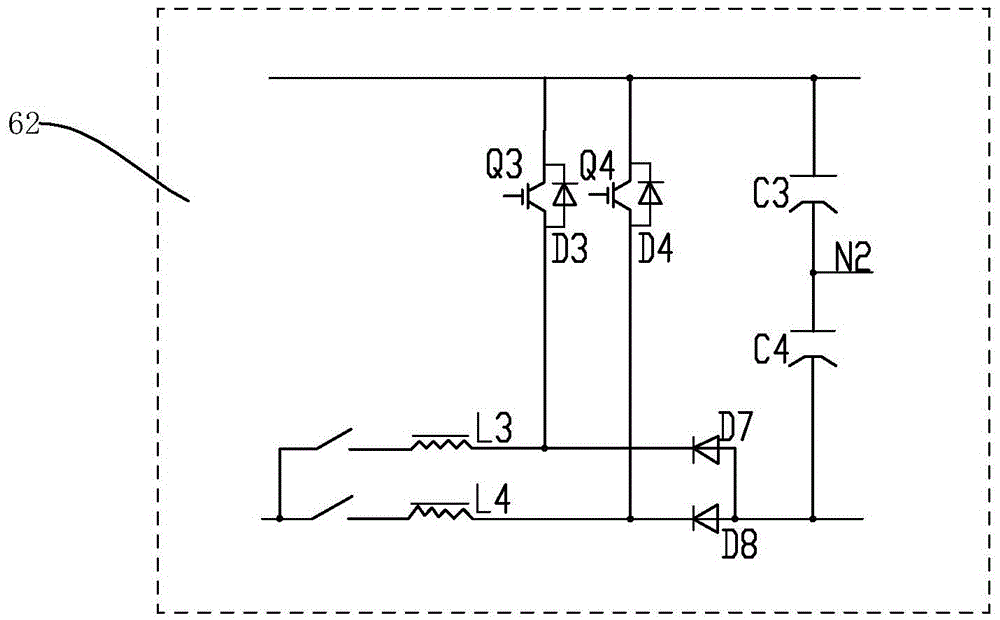Wind power converter main circuit topological structure with two units of direct-current bus connected in series
A technology of wind power converters and DC busbars, applied in AC network circuits, AC power input conversion to AC power output, circuit devices, etc. Increase and other problems, to achieve the effect of easy design and selection and systematic configuration, higher voltage level, and compact bus parallel circuit
- Summary
- Abstract
- Description
- Claims
- Application Information
AI Technical Summary
Problems solved by technology
Method used
Image
Examples
Embodiment Construction
[0017] Such as figure 1 As shown, the DC bus two-unit series converter circuit of the present invention includes a generator 1, a positive bus 2, a negative bus 3, a transformer 4 connected to an external power grid, and a rectifier module 5 connected to the positive bus 2 and negative bus 3 , a step-up module 6, an inverter module 7, the input end of the rectification module 5 is electrically connected to the generator 1, the input end of the step-up module 6 is electrically connected to the output end of the rectification module 5, the step-up The output terminal of the voltage module 6 is electrically connected to the input terminal of the inverter module 7, and the output terminal of the inverter module 7 is connected to the grid in parallel with the transformer 4. The alternating current is converted into direct current, and then boosted by the step-up module 6 , and finally the direct current is converted into alternating current by the inverter module 7 , and is connect...
PUM
 Login to View More
Login to View More Abstract
Description
Claims
Application Information
 Login to View More
Login to View More - Generate Ideas
- Intellectual Property
- Life Sciences
- Materials
- Tech Scout
- Unparalleled Data Quality
- Higher Quality Content
- 60% Fewer Hallucinations
Browse by: Latest US Patents, China's latest patents, Technical Efficacy Thesaurus, Application Domain, Technology Topic, Popular Technical Reports.
© 2025 PatSnap. All rights reserved.Legal|Privacy policy|Modern Slavery Act Transparency Statement|Sitemap|About US| Contact US: help@patsnap.com



